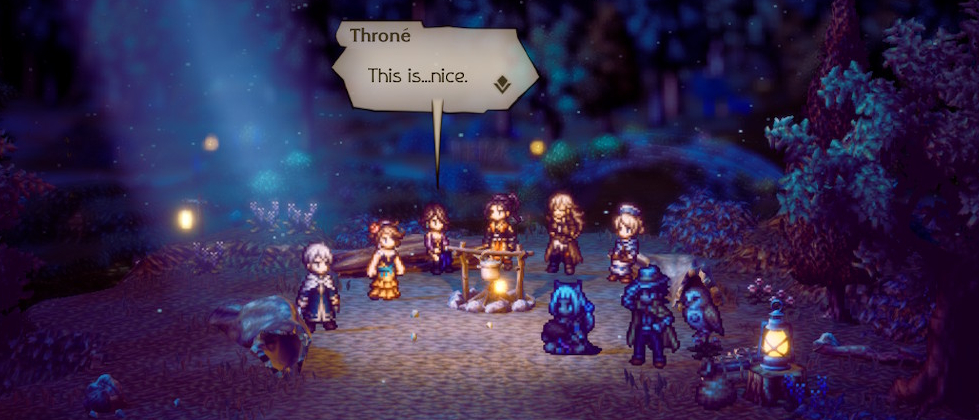Laptop Mag Verdict
Octopath Traveler 2 is ringing in a new series of role playing games that has potential to be as huge as the giants that came before.
Pros
- +
Engaging turn-based gameplay
- +
Day-night cycle mechanics
- +
Full circle narrative
- +
Gorgeous art and stellar music
Cons
- -
No voice acted travel banter
- -
Some characters could use unique skills
Why you can trust Laptop Mag
Octopath Traveler 2 is everything I wanted the original to be and more. No more disconnected stories strewn about by a loose connection to an absurdly difficult optional boss. No more hoping that everything is going to come together at the very end to send off your 100-hour journey in a blaze of glory. No more “is that really it?”
Our eight travelers argue, laugh, cry, and live life together on the road, each making their way toward new and old goals. It’s through the completion of these stories that we begin to see a pattern forming, something stirring within the shadows. This is a full circle journey that'll leave your jaw slacked and your heart in cardiac arrest.
I fell in love with each character, and it was sad to say goodbye, but I had to so I can tell you that Octopath Traveler 2 fulfills all your needs among the best Nintendo Switch games, best PS5 games, and best PC games. This is a new era of RPG.
The more things change
Octopath Traveler 2 sticks to its original turn-based formula but adds in a few twists that provide more opportunities for strategy.
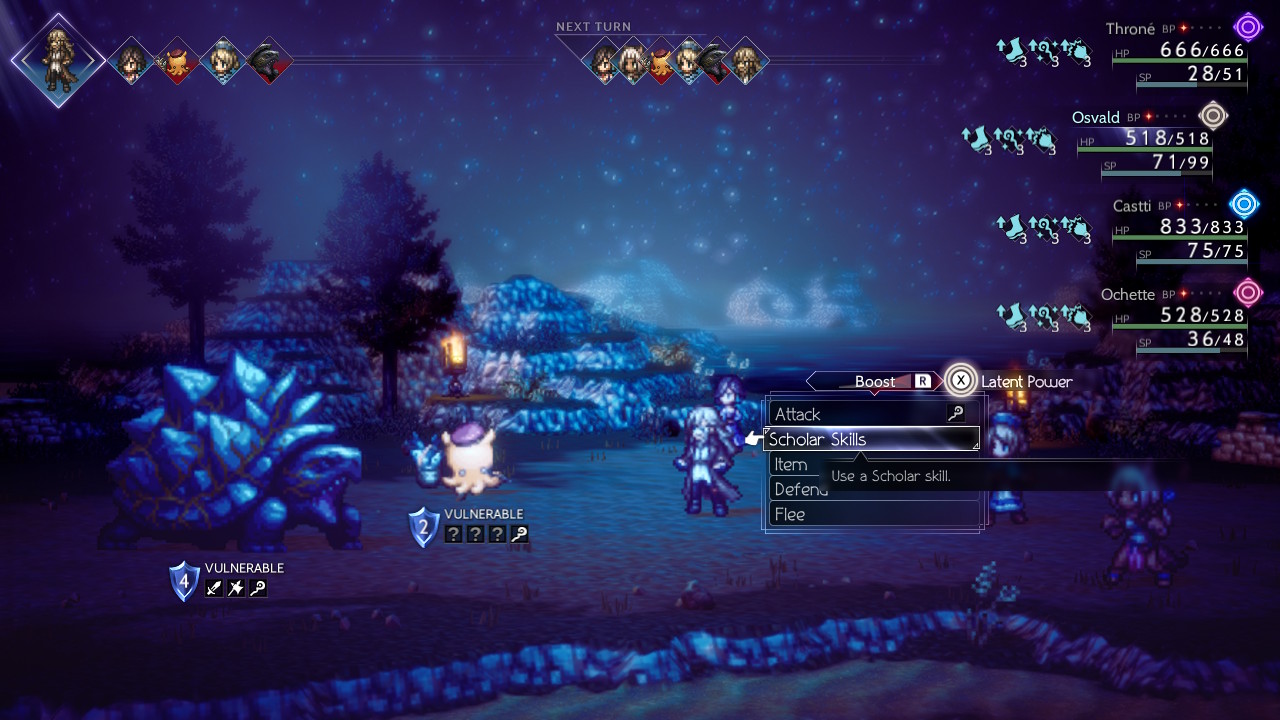
My favorite new mechanic is the day-night cycle. This effectively adds a new path action for every character, providing you with versatility in path encounters. In the original, it was a pain to have to run back to the tavern to get a different character each time you had to do something specific. But now with overlapping skills and varying levels of success, it's easier than ever to navigate through towns and loot all the info and items.
The day-night cycle also throws in some new combat mechanics for two of the companions, Throne and Temenos. At night, you'll receive Blessing of Darkness for the former and Moonlight Judgement for the latter, which effectively buffs your characters and debuffs your foes, respectively. While these are useful in combat, they're a cop out for more potentially unique abilities. For example, Hikari, Castti and Ochette have a unique skill tree of abilities they can tap into. I wish we had got to see unique skill lists for each of the eight characters. Unfortunately, Agnea and Partitio only get summons, and Osvald is stuck with his Study Foe skill, which becomes useless after you've fought a foe more than a few times.
Secondary jobs were a big thing in the original, but they were rather limited in number. In Octopath Traveler 2, there are licenses, which effectively allow you to use all standard secondary jobs three times. That means you can give the Cleric secondary job to three different people in your party. Yes, you can have a full party of Clerics (scary). On top of that, there are four unique secondary jobs, but they are limited to one license each and are particularly difficult to obtain.
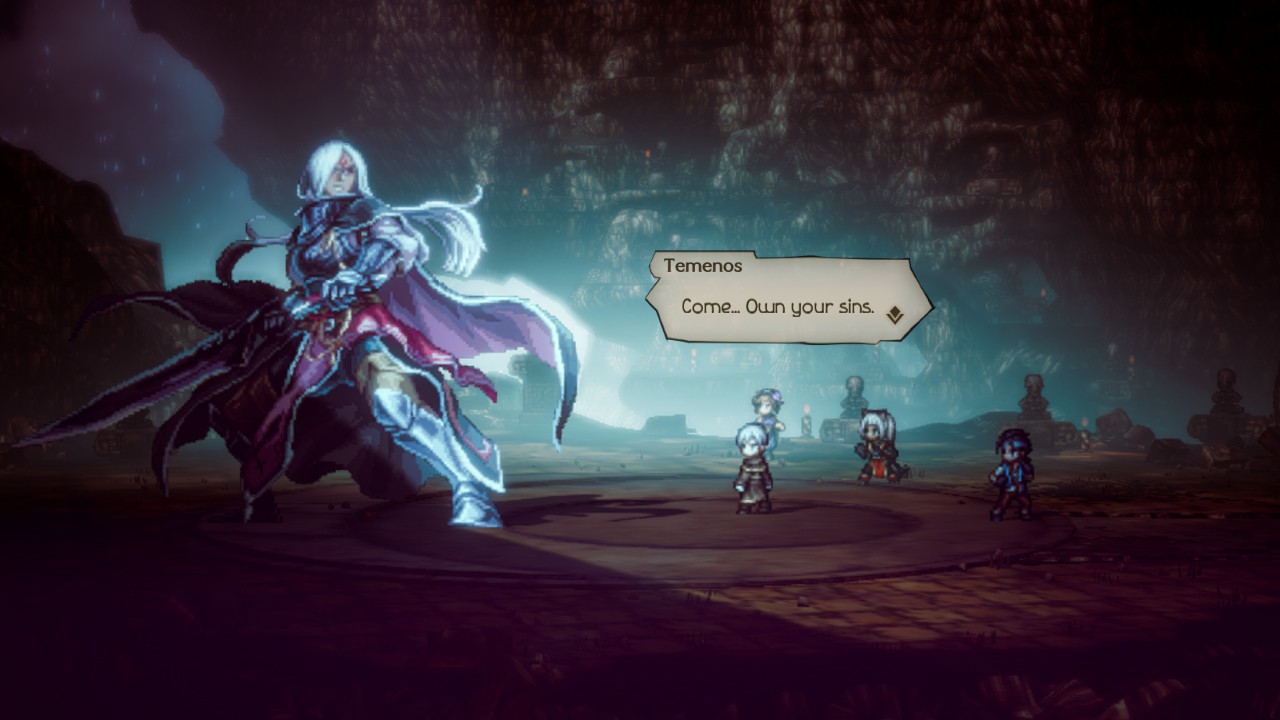
I love the addition of EX skills, which are unique to the characters as opposed to the jobs themselves. Each character gets two unique skills, one of which is unlocked by completing the character’s story and the other by attuning with the alter of the god that the character is associated with. These are some of the most powerful skills in the game.
There’s also the addition of latent abilities, which are kind of like Ultimate abilities that can be used only when they’ve charged up. For Ochette and Hikari, it gives them access to a new set of offensive skills. And for Osvald, it reduces his spells to single-target but increases the power output, which is great for fighting bosses. This adds yet another layer of complexity to combat that I love.
Toward the end of the game, we see how creative the developers can get with putting all eight characters into one fighting arena. I wish that there were more opportunities for that throughout the game. It would have made it easier to level up all of the characters and add another layer of complexity to battles.

One small but wonderful addition was the inclusion of 2x speed for battles. I’ve had it on for the entire game and would otherwise feel like I was trapped in slow-motion if I went back to regular speed. I’d even recommend adding a 3x speed, too.
There were some other changes that I wasn’t too fond of. The Thief lost their SP Steal skill, and the Scholar was heavily nerfed, requiring you spend an additional turn to double up on your spells. You could argue that the Scholar is more powerful in the endgame, but during the beginning, you’re not going to be doing as much damage.
Overall, the gameplay changes added to Octopath Traveler 2 flesh out the foundational support that the original provided.
Without a shadow of a doubt
Octopath Traveler 2 is by far the more superior game when it comes to the narrative. Granted, it wasn’t tough to beat, as the original didn’t really give us much of an ending. This game not only has an ending, but the characters interact within some cooperative chapters and have fully voiced conversations. This is a low bar, but it’s a bar this game hit that the original didn’t.
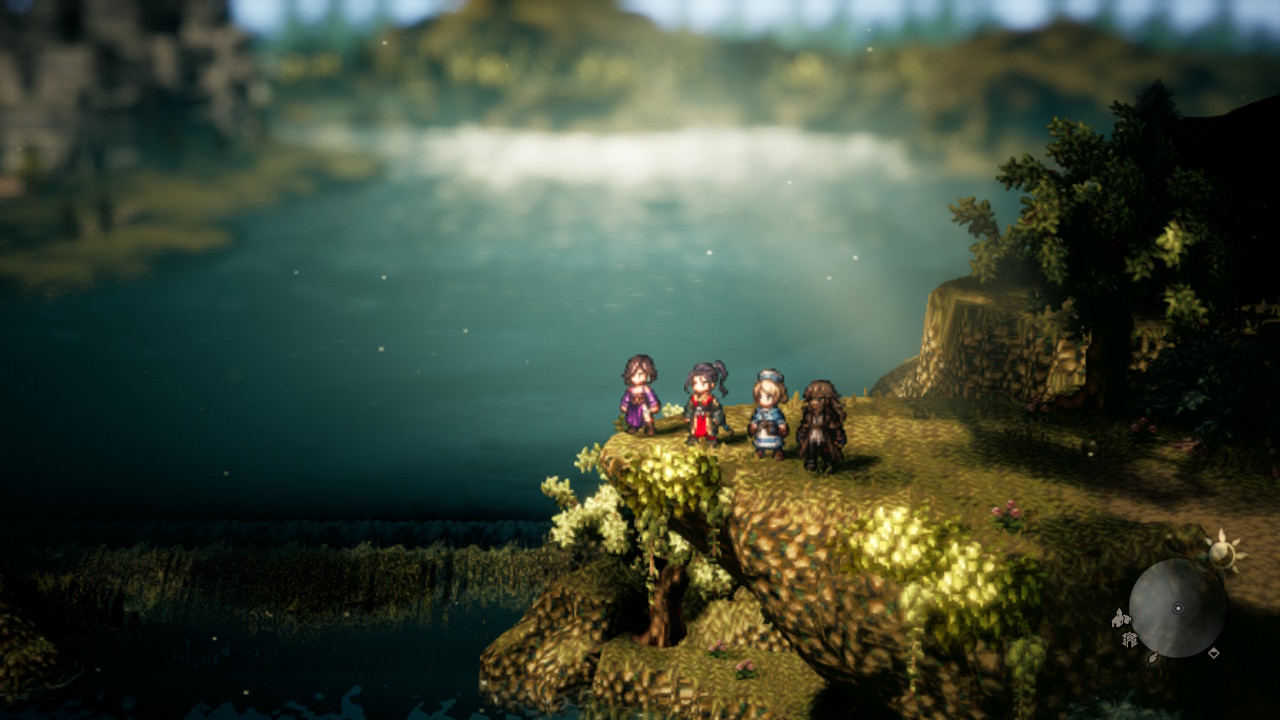
Octopath Traveler 2 is still awkward in some places when it comes to character interactions. For example, the travel banter still isn’t voice acted, which is a shame. But you can access all of the travel banter now via your journal, which is a wonderful improvement.
The stories are more focused on the narrative and use the gameplay mechanics to tell the story instead of the other way around. One of the greatest examples of this is during Castti’s story. When she inquires about information during a story beat, the text will glitch out and bold an important word. Combining the Inquire mechanic and the narrative is a cool way to deliver information. Mechanics and storytelling go hand-in-hand during Hikari’s arc as well, as our warrior uses the Challenge path action to defeat chapter bosses all on his own.
Despite dumping 92 hours into Octopath Traveler, the narrative chapters aren’t actually that long. There are just a lot of them. I like how short they are because you can easily take breaks in between without having to worry about getting knee deep into a convoluted anime-like plot hole.
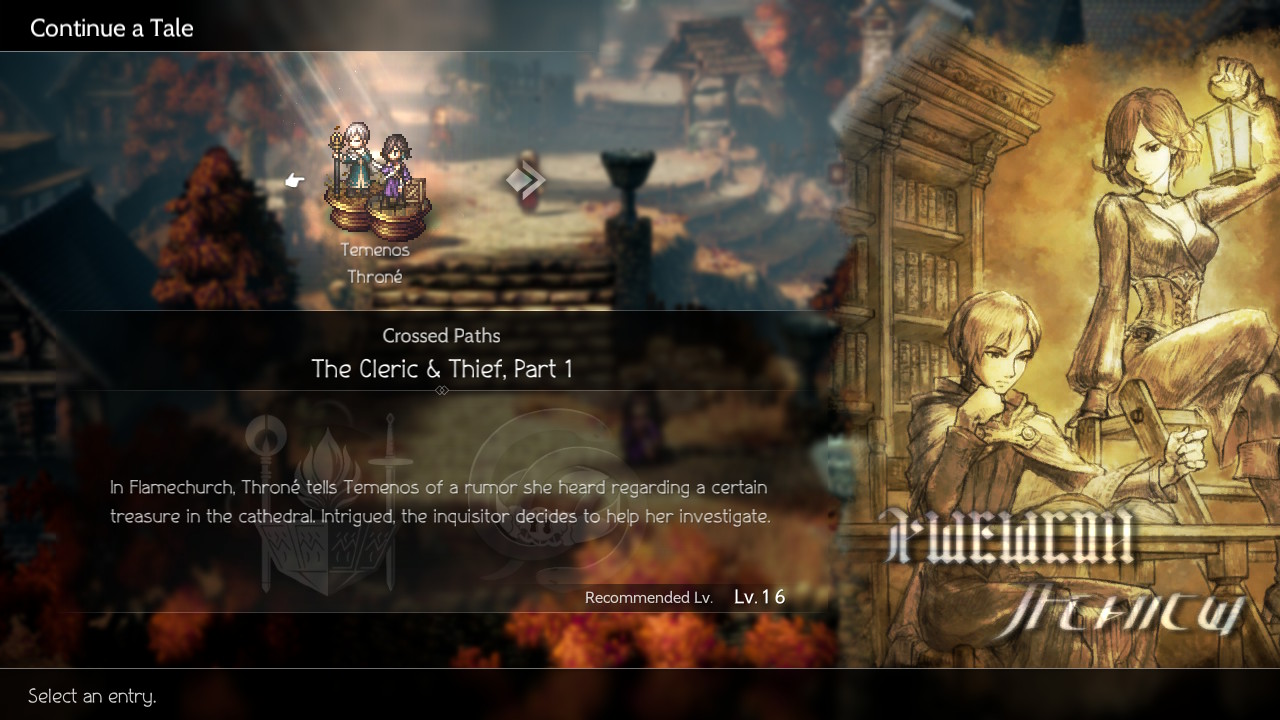
The first character you choose is your protagonist, and that choice sticks with you through the very end. You get more of an insight into their character towards the end of the story, so choose wisely, or at least who you think the most interesting is. I picked Throne, but if I were to play again, I would probably pick Temenos — he has real main character energy throughout the narrative. Mechanically, though, I would’ve chosen Osvald for his Study Foe skill, and for those 100% fiends, I’d go with Hikari — my entire build to fight the secret super boss relied on him being as decked out as possible.
My favorite personal narrative is probably Throne's. It's just so twisted and I was not expecting it to go to the places that it went. In her quest for freedom, she finds herself bound by more chains than the collar around her neck. It makes me wonder how this game even got a T for teens rating.
Another small but much needed improvement is the addition of automatic dialogue, so you don’t have to sit there clicking on each line of text. I was able to sit back and watch cutscenes play out like a movie.
Contrast: Over 9,000!
As a fiend for vivid art and high-contrast visuals, Octopath Traveler 2 appeals to me more than most games that utilize retro pixel art. Every moment is detailed and yet looks like a fever dream viewed through a vignette. It’s reminiscent of a picture book, if you dumped buckets of bold paint on said picture book.
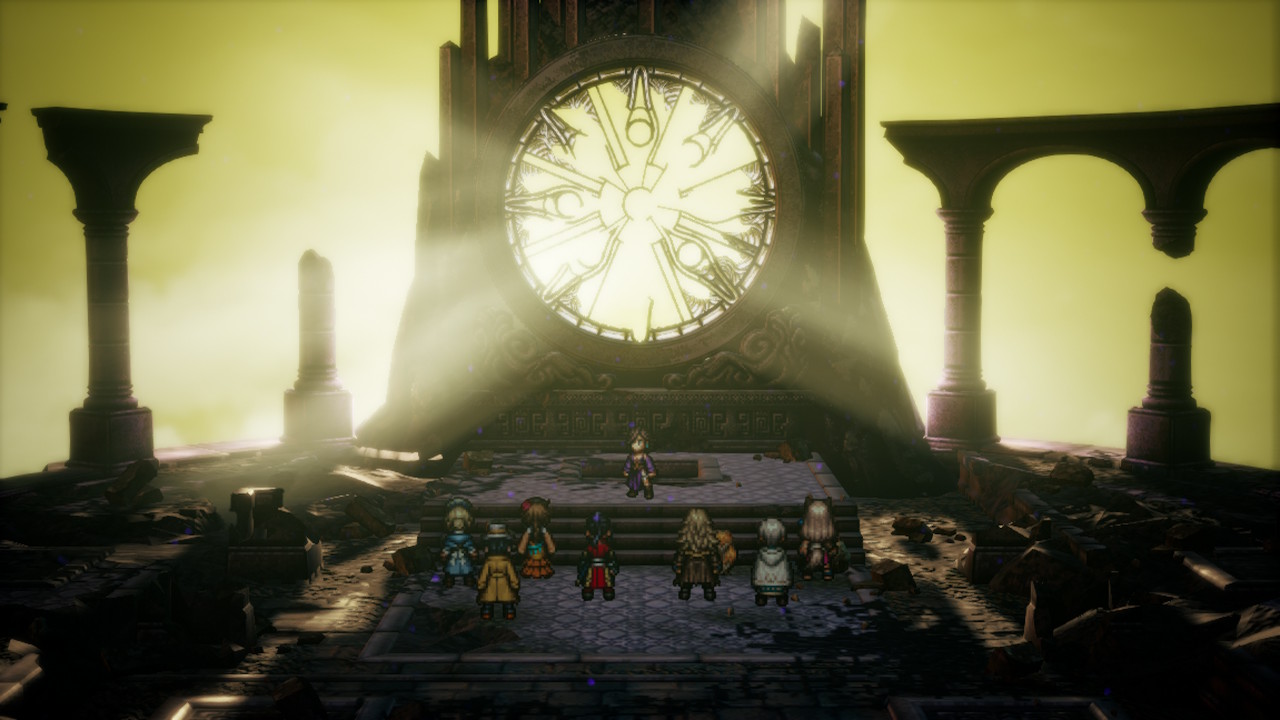
Octopath Traveler 2’s art is complemented by soothing and intense soundtracks (pls release on Spotify) throughout that fully immersed me in the industrial fantasy world that the game presents. Most RPGs that run close to 100 hours can be a straight up slog to get through, but there wasn’t a single moment like that in Octopath, and that’s because I was sucked into the world’s presentation.
Bottom line
Octopath Traveler 2 is my ideal RPG. There’s very little I would remove from it. I want Square Enix to continue to build upon the foundation of each game. I want to see Octopath Traveler 3 with more wild and creative mechanics. I envision a future where I'm playing Octopath Traveler 10 in my late 60s — if it continues to follow a 5-year cycle… if Square Enix survives that long… if I survive that long… if Earth survives that long.
Anyway, good game.

Rami Tabari is the Reviews Editor for Laptop Mag. He reviews every shape and form of a laptop as well as all sorts of cool tech. You can find him sitting at his desk surrounded by a hoarder's dream of laptops, and when he navigates his way out to civilization, you can catch him watching really bad anime or playing some kind of painfully difficult game. He’s the best at every game and he just doesn’t lose. That’s why you’ll occasionally catch his byline attached to the latest Souls-like challenge.
